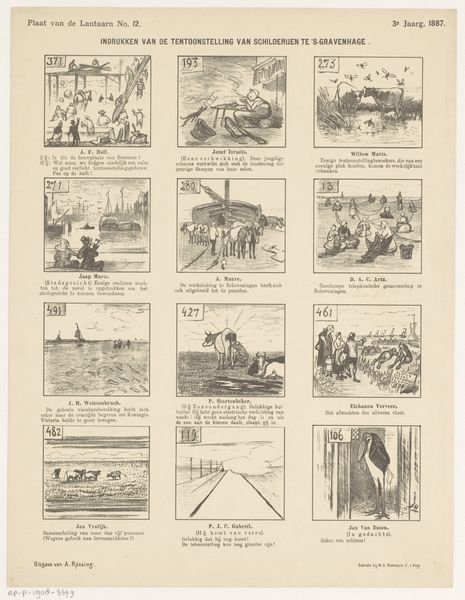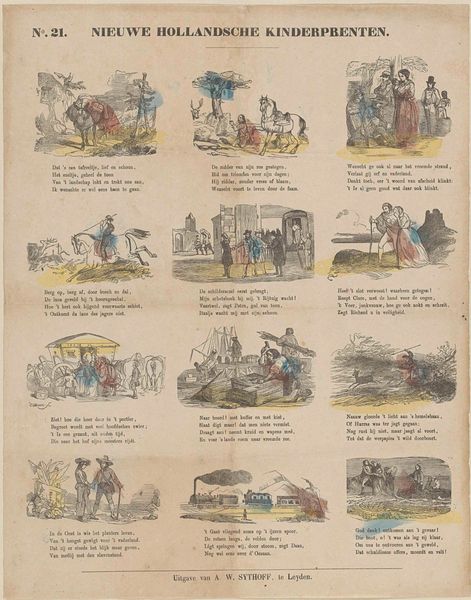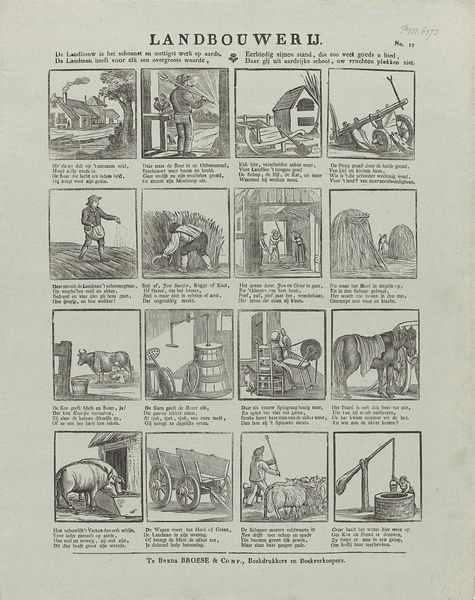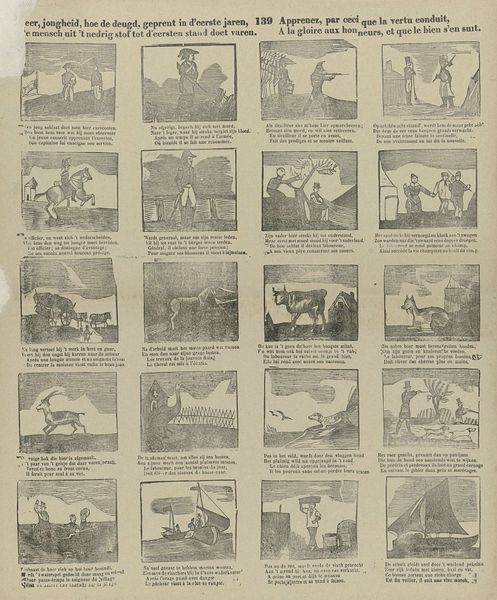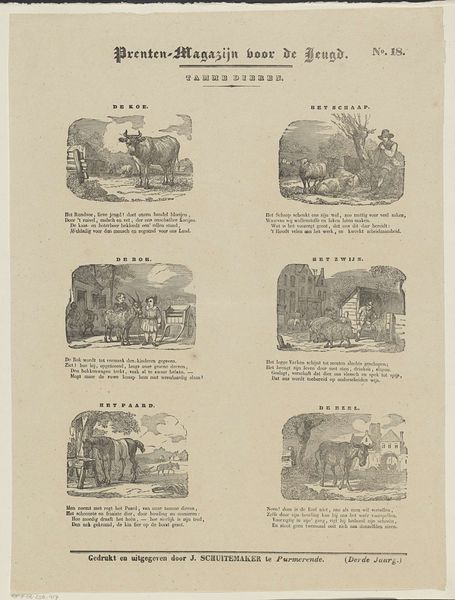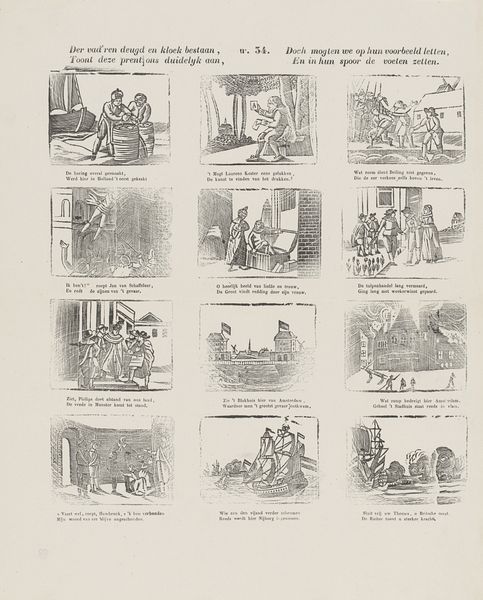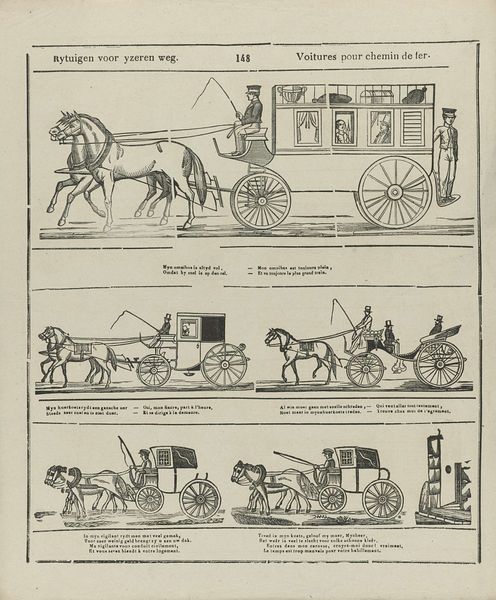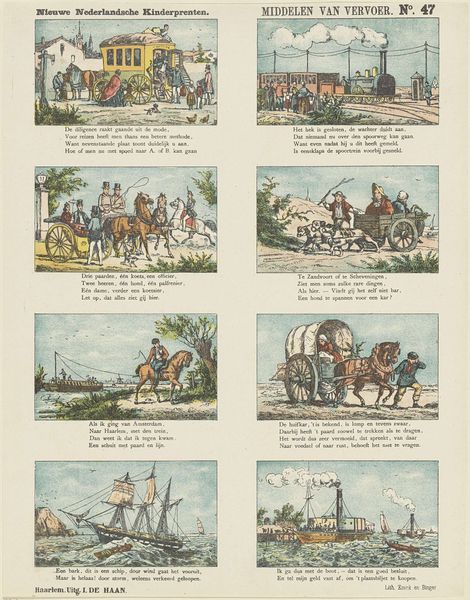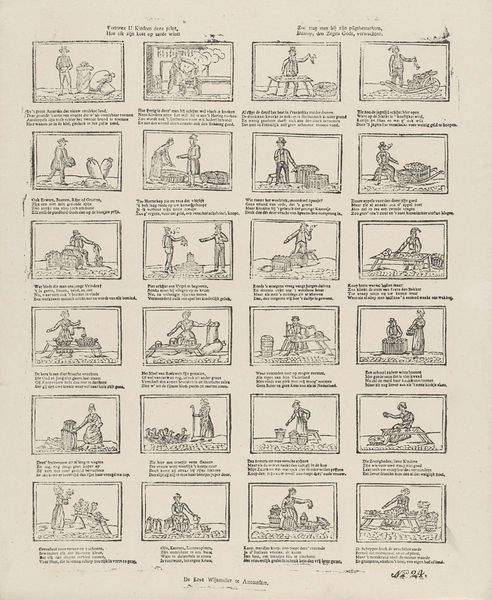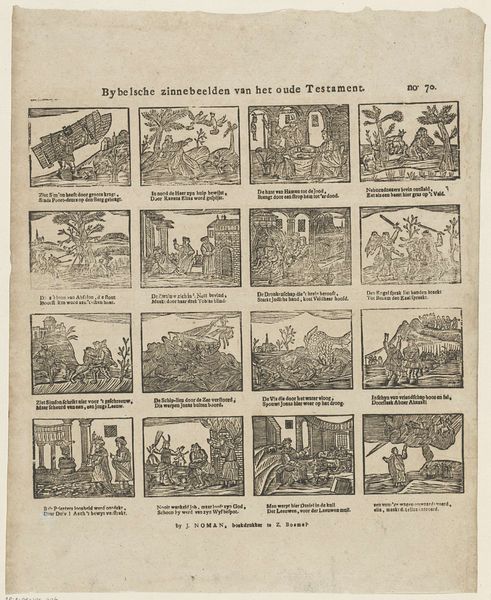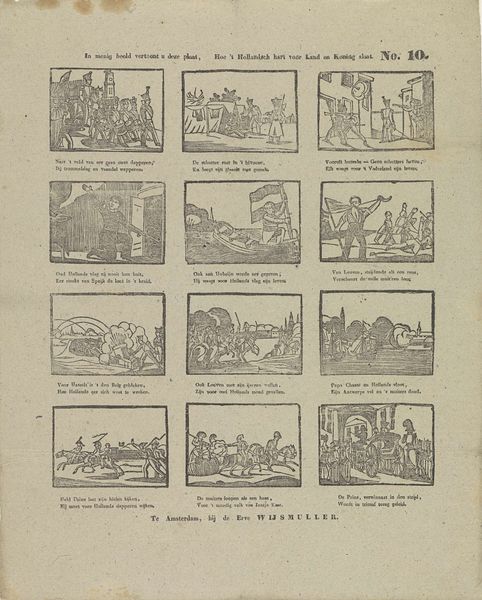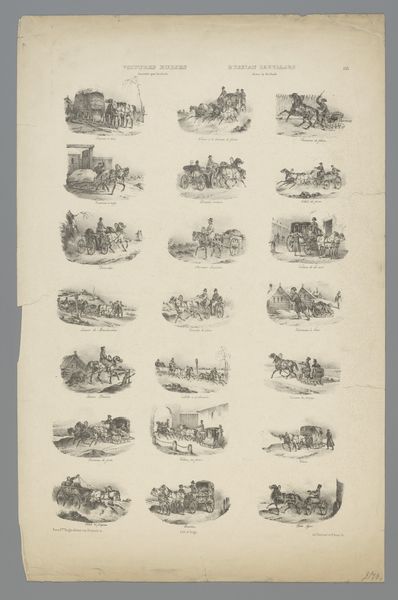
Het rijden is een schoone zaak, / Het strekt tot nut en tot vermaak. / Doch lieve kind'ren, bij het rijden, / Moet men een ongeluk vermijden 1848 - 1881
0:00
0:00
graphic-art, print, engraving
#
graphic-art
#
comic strip sketch
#
quirky sketch
#
narrative-art
# print
#
comic
#
genre-painting
#
engraving
Dimensions: height 395 mm, width 305 mm
Copyright: Rijks Museum: Open Domain
Curator: The Rijksmuseum holds a print entitled, "Het rijden is een schoone zaak, / Het strekt tot nut en tot vermaak. / Doch lieve kind'ren, bij het rijden, / Moet men een ongeluk vermijden," created by Lutkie & Cranenburg between 1848 and 1881. Editor: This work presents twelve small, almost comic-strip-like sketches of horse-drawn carriages, each with a short verse. There's something almost darkly humorous about it, given the title and the implied threat of accidents. How do you interpret this work in its historical context? Curator: It's interesting you picked up on that humor, that subtle darkness. Think about the mid-19th century: industrialization was rapidly changing Dutch society. This print, with its folksy style, could be seen as a commentary on these changes. Who had access to transportation, and what kind? The wealthy in their fancy carriages? Or the working class with their heavily laden carts? What does that say about mobility and social status? Editor: So, you're saying the "humor" might be a form of social critique? Highlighting the disparities in Dutch society at the time through something as simple as modes of transport? Curator: Precisely. And the warning to children? Is it merely about physical safety, or also about the potential pitfalls of a rapidly changing social landscape? Is it advocating for awareness in times of political unrest? What do you make of the chosen medium: a print? Editor: Well, prints were much more accessible to a wider audience. So, the message, whatever it may be, could reach more people than, say, a painting hanging in a wealthy person's home. Curator: Exactly. And remember, this was a period of significant political and social upheaval across Europe. Lutkie and Cranenburg may have been using these seemingly innocent carriage scenes to subtly comment on much larger societal issues, anxieties, and even class struggles. Editor: I never would have looked at a quirky drawing of carriages and considered it through that lens. Curator: That's the power of understanding art in its historical context, isn't it?
Comments
No comments
Be the first to comment and join the conversation on the ultimate creative platform.
